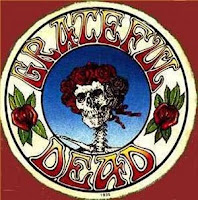"Save for using an actual human with sticks or sweaty palms, there is nothing more beneficial to modern electronic music than the invention of drum machine technology. Hip hop, new wave, disco; the sequencer with a rompler/rhythmic sample — the drum machine — made it all possible.
While we can all thank drum machine innovators from the 30s throughout the 60s — Leon Theremin’s Rhythmicon, Harry Chamberlain’s Rhythmate, Raymond Scott’s Rhythm Synthesizer — for their pre-computerized rhythmic prowess and dedication, it wasn’t until the pre-set 70s that drum machines came into their own. The Eko Corporation’s ComputeRhythm, Ace Tone’s Rhythm Producer FR-15, the PAiA Programmable Drum Set and the late great Roland CR-78 made early disco what it was. Yet it was the 80s of early house, electro-dance music and new wave that set the basic drum patterns for where we are today.
The Linn LM-1 Drum Computer of 1980 and its immediate follow-up, the cymbal-crashing LinnDrum, were the first true drum machines to use digital samples. From the Minneapolis sound of The Time and Prince in the United States to UK giants The Human League’s pop coming-out party, Dare, the LM-1 was the sound of a generation, a cheaply crisp and densely snapping set of pulses that got its drive from two chips that when triggered simultaneously gave the compu-rhythm a certain fleshly kick to it.
The Roland 808 only advanced that devil-in-the-flesh feeling, which was weird because it did not use clean, digitally sampled sounds, but rather analog-created bumps and grinds, continuous signals with noise as part of the transfer. The 808 had pre-loaded grooves such as open hi-hats, closed hi-hats, and cowbells along with a big, thick kick drum and dense snare beat. Afrika Bambaataa is probably the first most famous proponent of the 808 as is all early house music. 808 State isn’t just an English electronic act – it is a state of mind and a position of being.
The Roland 909, on the other hand, was a half-breed: semi-analog and semi-sample-based – not as open to noise and fuzz as the 808 – with a drum kit’s real arsenal of hits and kicks along with a sequencer. It was the first MIDI-equipped drum machine and, like the 808, had greater capacity for storing whole tunes rather than just percussive tics.
The Yamaha RX 5 had its built-in sounds, 24 to be exact. But through a series of envelopes and triggers, you could affect the attack and the decay of each sound, therefore giving each percussive sound its own character feels and flaws. It also had a kitsch factor that not every drum machine had in that it offered door slams, gunshots and ricochets.
The Oberheim DMX – this was the sound of the later 80s, hits by Eurythmics, the System and New Order, the kick drum on the Police’s “Every Breath You Take” and the chalky snap of Phil Collins’ “Sussuidio.” Easier to program than all previously made drum machines, the O-DMX was the realest sounding drum machine as it sampled the tone and crack of real drums, along with tuning functions for each percussive voice. Along with creating variations of time and pace prevalent among real drummers, the O-DMX did one thing no other drum machine did previously: it offered a swing function. That is the improvisational heft of all drummers – the rate and particulars of how a drumming man or woman swings. This was truly the start of the brave new world of the drum machine; a real duty now for the future move.
For all of history’s drum machines, now easily manipulated and inexpensive, the most popular is still the 808. Kayne West titled his most robotic and romantic album yet after it (808s & Hearbreak). Producer Timbaland hasn’t just used 808s, he’s got a song named after it. So does Bassnectar (“The 808 Track”) .
It’s the tinny thump that you watch David Byrne dance to in the Jonathan Demme Talking Heads documentary, Stop Making Sense. It’s the thin, sexy click of Marvin Gaye’s “Sexual Healing” and by Japan’s Yellow Magic Orchestra on the clattering “Thousand Knives.”
It is the rough thump of Arthur Baker and the Beasties’ Licensed to Ill. The Fresh Prince liked it back in the day, and Ke$ha likes it today. Kraftwerk used it in the “Computer World” 80s and during last year’s series of shows at the Museum of Modern Art. It was the sound of the Bronx and Berlin and beyond. It is the past and the future."
Here's the link to the original article. Below is a nice overview of the Roland TR-808, the machine that started it all.
----------------------------------
You should follow me on Twitter for daily news and updates on production and the music business.
Don't forget to check out my Music 3.0 blog for tips and tricks on navigating social media and the new music business.




